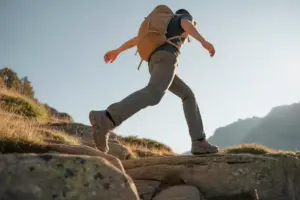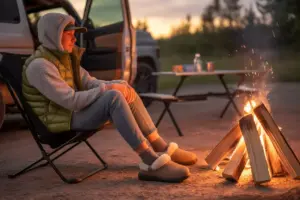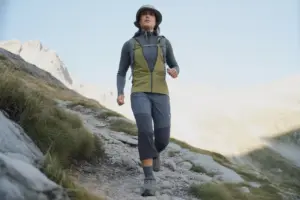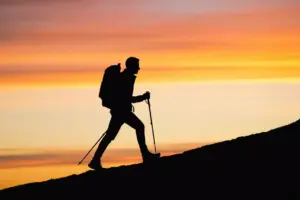Camping with a View: The Best Mountain Vistas in California for Your Tent
Picture this: you wake up to the sound of birds chirping, unzip your tent, and step outside to witness the sun painting snow-capped peaks in brilliant shades of gold and orange. California’s mountain ranges offer some of the most spectacular camping experiences in the world, where every sunrise becomes a masterpiece and every sunset leaves you breathless. From the towering granite walls of the Sierra Nevada to the rugged coastline views of the Santa Lucia Range, the Golden State delivers unparalleled outdoor adventures for tent campers seeking that perfect vista.
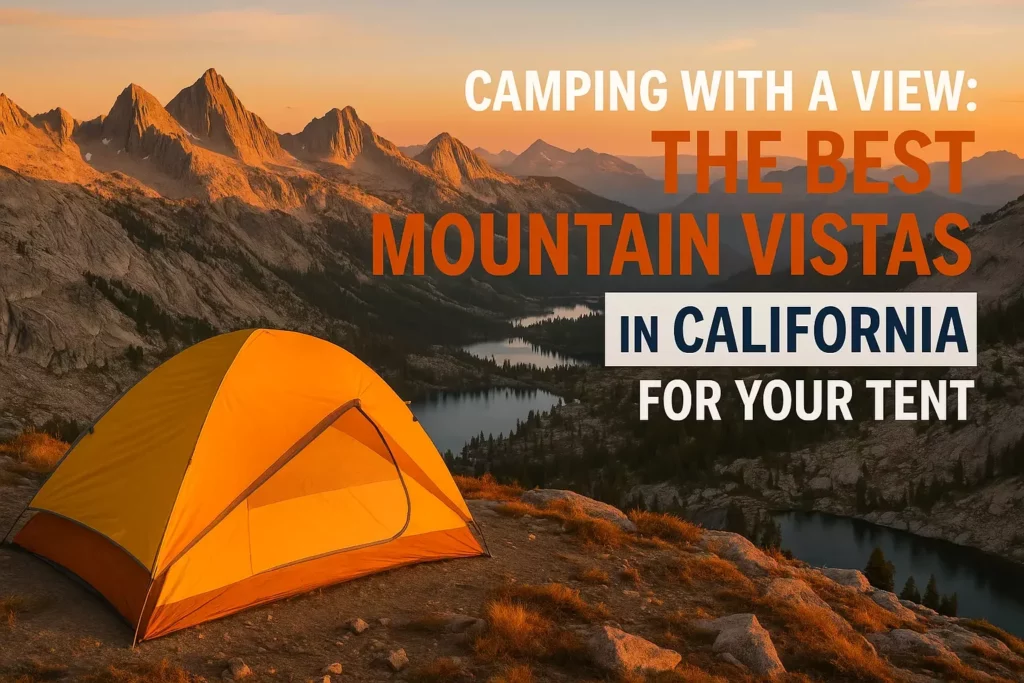
Key Takeaways
- California offers diverse mountain camping experiences across multiple ranges including the Sierra Nevada, Cascade Range, and Coast Ranges, each providing unique scenic vistas
- Elevation matters for views and comfort – higher elevations offer better panoramic views but require proper gear and preparation for changing weather conditions
- Seasonal timing is crucial – late spring through early fall provides the best weather and accessibility, while winter camping requires advanced skills and equipment
- Proper preparation enhances safety and enjoyment – research permits, weather conditions, and pack appropriate gear for mountain environments
- Leave No Trace principles protect these pristine environments for future generations of campers to enjoy
Understanding California’s Mountain Camping Landscape
California’s diverse geography creates a paradise for mountain camping enthusiasts. The state boasts several major mountain ranges, each offering distinct characteristics and breathtaking views. The best mountain camping in California spans from the volcanic peaks of the Cascade Range in the north to the desert mountains of the south.
Major Mountain Ranges for Camping
Sierra Nevada Range 🏔️
The Sierra Nevada stretches over 400 miles along California’s eastern border, featuring iconic destinations like Yosemite, Sequoia, and Kings Canyon National Parks. This range offers granite domes, alpine lakes, and some of the most photographed landscapes in America.
Cascade Range
Northern California’s volcanic wonderland includes Mount Shasta and Lassen Peak, providing unique geological features and stunning 360-degree views from elevated camping spots.
Coast Ranges
These coastal mountains offer the rare opportunity to camp with views of both ocean and mountain vistas, creating truly unique camping experiences.
Transverse and Peninsular Ranges
Southern California’s mountains provide year-round camping opportunities with dramatic desert-to-mountain transitions and clear, starry skies.
Top Mountain Vista Camping Destinations
Sierra Nevada: Crown Jewel of California Camping
Yosemite National Park
Glacier Point Road Campgrounds
The campgrounds along Glacier Point Road offer unparalleled access to Yosemite’s granite monoliths. Bridalveil Creek Campground sits at 7,200 feet elevation, providing cool summer temperatures and stunning views of the High Sierra.
Tuolumne Meadows
At 8,600 feet, this subalpine meadow offers 360-degree mountain views and serves as a gateway to the High Sierra backcountry. The camping experience here combines accessibility with true wilderness beauty.
Sequoia and Kings Canyon National Parks
Lodgepole Campground
Nestled among giant sequoias with views of the Great Western Divide, this campground offers the unique experience of camping among the world’s largest trees while enjoying mountain vistas.
Cedar Grove
Located in Kings Canyon, this area provides dramatic granite canyon views reminiscent of Yosemite but with fewer crowds.
Eastern Sierra: The Adventure Seeker’s Paradise
Mammoth Lakes Region
The Eastern Sierra offers some of the best mountain camping in California for those seeking dramatic alpine scenery. The region features:
- Convict Lake: Camping with views of jagged peaks reflected in pristine alpine waters
- Lake Mary: High-altitude camping surrounded by 12,000+ foot peaks
- June Lake Loop: Four interconnected lakes with camping options offering different mountain perspectives
Bishop Area
Sabrina Lake and South Lake provide high-altitude camping experiences with access to the John Muir Wilderness and spectacular Sierra Crest views.
Northern California’s Volcanic Wonders
Mount Shasta Region
Panther Meadows
This high-elevation camping area offers direct views of Mount Shasta’s 14,179-foot summit. The spiritual significance of this mountain adds a mystical element to the camping experience.
Lassen Volcanic National Park
Butte Lake Campground provides views of Cinder Cone and the Fantastic Lava Beds, offering a unique volcanic landscape camping experience.
Coastal Mountain Camping
Big Sur Region
Julia Pfeiffer Burns State Park and surrounding areas offer the rare opportunity to camp with views of both the Pacific Ocean and the Santa Lucia Mountains.
Essential Gear for Mountain Vista Camping
Mountain camping requires specialized equipment to handle elevation changes, weather variability, and rugged terrain. Here’s what every mountain camper needs:
Shelter and Sleep Systems
Four-Season Tents
Mountain weather can change rapidly. A sturdy tent designed for wind and potential snow is essential. Consider features like:
- Strong pole structure
- Low profile for wind resistance
- Vestibule space for gear storage
For families planning their first mountain adventure, understanding proper tent setup procedures can make the difference between a comfortable night and a challenging experience.
Sleeping Bags and Pads
Mountain temperatures drop significantly at night, even in summer. Choose sleeping bags rated for expected temperatures and include:
- Temperature rating 10-15 degrees below expected lows
- Quality insulation (down or synthetic)
- Insulated sleeping pad with high R-value
Clothing and Weather Protection
Mountain weather demands layered clothing systems. Pack appropriate cool weather clothing including:
Base Layers
- Moisture-wicking materials
- Avoid cotton in favor of merino wool or synthetic fabrics
Insulation Layers
- Fleece or down jackets
- Insulated pants for cold mornings and evenings
Shell Layers
- Waterproof, breathable rain jacket and pants
- Wind-resistant outer layers
Safety and Navigation Equipment
Mountain environments require enhanced safety preparation:
First Aid Supplies
Comprehensive first aid kits should include altitude sickness medication and emergency communication devices.
Navigation Tools
- GPS devices and backup batteries
- Topographic maps and compass
- Emergency whistle and signaling devices
Survival Gear
A well-planned bushcraft survival kit can be lifesaving in mountain emergencies.
Planning Your Mountain Camping Adventure
Seasonal Considerations
Spring (March-May)
- Lower elevation camping as higher areas may still have snow
- Wildflower blooms in foothill regions
- Variable weather requiring flexible planning
Summer (June-August)
- Peak season for high-elevation camping
- Best weather and accessibility
- Crowded popular destinations require advance reservations
Fall (September-November)
- Excellent weather with fewer crowds
- Spectacular autumn colors in deciduous areas
- Earlier sunsets and cooler temperatures
Winter (December-February)
- Limited to lower elevations and experienced winter campers
- Spectacular snow-covered vistas
- Requires specialized winter camping skills and equipment
Permits and Reservations
Many of California’s best mountain camping destinations require advance planning:
National Park Reservations
- Book popular campgrounds up to 6 months in advance
- Consider midweek camping for better availability
- Have backup plans for popular destinations
Wilderness Permits
- Required for backcountry camping
- Often available through lottery systems
- Day-of permits sometimes available but limited
Water and Food Considerations
Mountain camping requires careful planning for water and food:
Water Sources
- Research reliable water sources along your route
- Carry water purification methods including filters and purification tablets
- Plan for increased water needs at altitude
Food Storage
- Use bear canisters in required areas
- Plan high-energy meals for mountain activities
- Consider campfire cooking techniques for memorable outdoor meals
Family-Friendly Mountain Camping Options
California offers excellent mountain camping opportunities for families seeking scenic adventures:
Beginner-Friendly Destinations
Lake Almanor Peninsula
This Cascade Range destination provides stunning mountain views with amenities suitable for camping with kids.
Pinecrest Lake
Located in the Sierra Nevada, this area offers mountain views with lake activities perfect for family camping activities.
Tips for Family Mountain Camping
- Start with car camping before attempting backpacking
- Choose campgrounds with restroom facilities
- Plan shorter hiking distances for children
- Pack extra layers for temperature changes
- Bring entertainment for potential weather delays
Photography and Vista Optimization
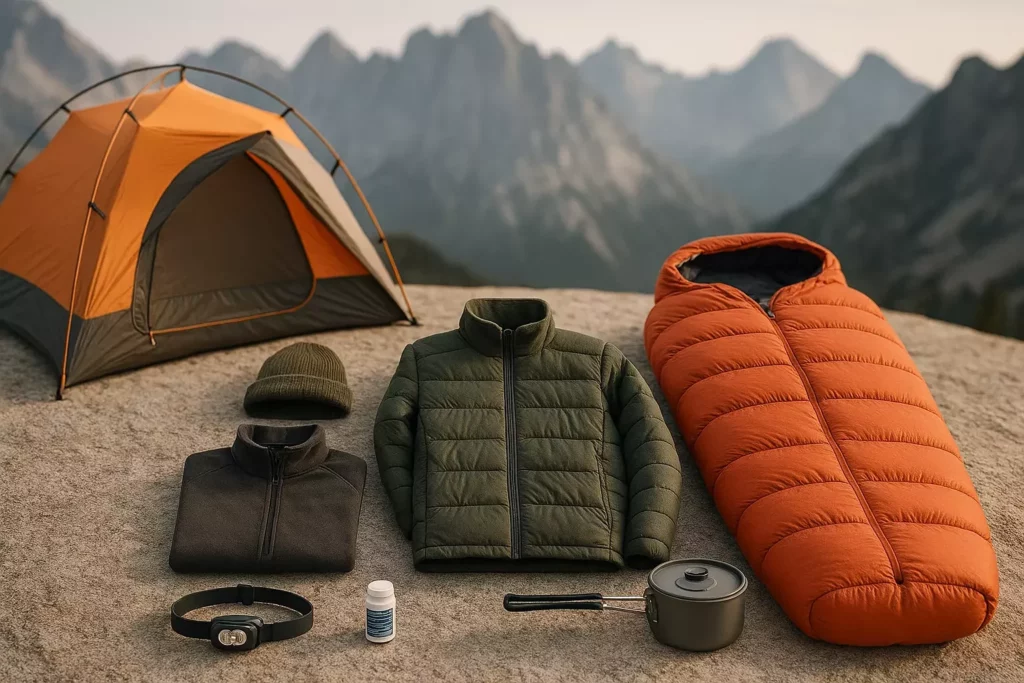
Mountain camping offers incredible photography opportunities. To capture the best views:
Golden Hour Planning
- Research sunrise and sunset times for your elevation
- Scout locations the evening before morning shoots
- Use apps to predict optimal lighting conditions
Weather Considerations
- Clear mornings often provide the best visibility
- Post-storm conditions can offer dramatic cloud formations
- Fog and mist can create mystical mountain scenes
Equipment Recommendations
- Sturdy tripod for low-light conditions
- Wide-angle lens for panoramic vistas
- Extra batteries (cold weather drains power quickly)
Environmental Responsibility and Conservation
Preserving California’s mountain environments ensures future generations can enjoy these spectacular vistas:
Leave No Trace Principles
Plan Ahead and Prepare
- Research regulations and seasonal closures
- Prepare for extreme weather and emergencies
- Know the regulations and special concerns for the area
Travel and Camp on Durable Surfaces
- Use established campsites when available
- Avoid camping on fragile vegetation
- Keep campsites small and focus activities on durable surfaces
Dispose of Waste Properly
- Pack out all trash, leftover food, and litter
- Use toilet facilities when available
- Follow proper waste disposal methods for backcountry areas
Leave What You Find
- Preserve the past by leaving cultural and historic artifacts
- Leave rocks, plants, and natural objects as found
- Minimize site alterations
Wildlife Protection
Mountain environments host diverse wildlife requiring respectful coexistence:
- Store food properly to avoid attracting animals
- Observe wildlife from safe distances
- Never feed wild animals
- Make noise while hiking to avoid surprising animals
Advanced Mountain Camping Techniques
For experienced campers seeking the ultimate mountain vistas:
High-Altitude Camping
Acclimatization Strategies
- Ascend gradually to allow body adjustment
- Stay hydrated and avoid alcohol
- Recognize symptoms of altitude sickness
Cold Weather Techniques
- Prevent water from freezing overnight
- Manage condensation in tents
- Maintain body heat through proper nutrition
Backcountry Navigation
Route Planning
- Study topographic maps thoroughly
- Identify bailout routes and emergency exits
- Share itineraries with reliable contacts
Weather Monitoring
- Understand mountain weather patterns
- Recognize signs of incoming storms
- Plan escape routes for severe weather
Interactive Camping Location Selector
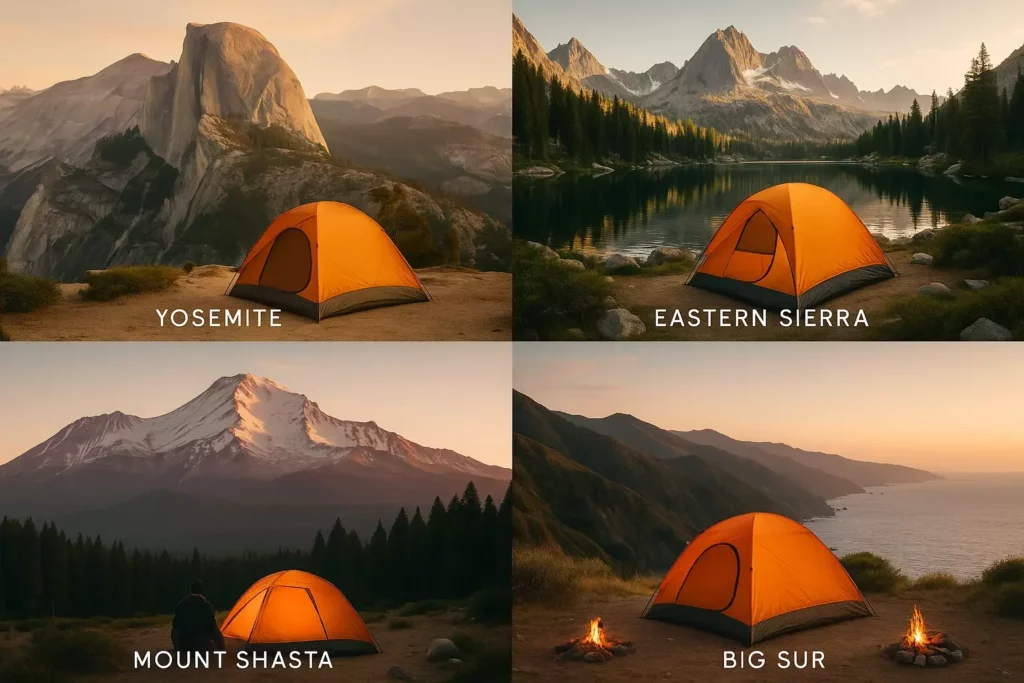
🏔️ Find Your Perfect California Mountain Camping Spot
Packing Strategies for Mountain Camping
Efficient packing becomes crucial when heading to mountain destinations where every ounce matters and space is limited. Understanding how to pack your backpack for camping can significantly improve your mountain camping experience.
Weight Distribution Techniques
Heavy Items Low and Close
- Place heavy gear like water and food close to your back
- Keep the weight low in your pack for better balance
- Distribute weight evenly between left and right sides
Accessibility Planning
- Keep frequently used items in easily accessible pockets
- Pack rain gear and warm layers where you can reach them quickly
- Store overnight essentials separately from daytime gear
Mountain-Specific Packing Considerations
Layering System Organization
- Pack clothing in compression sacks by layer type
- Keep base layers, insulation, and shell layers separate
- Use packing cubes to maintain organization throughout the trip
Emergency Gear Accessibility
- Keep first aid supplies in an external pocket
- Ensure emergency communication devices are easily reachable
- Pack emergency shelter and fire-starting materials accessibly
Weather Patterns and Safety Considerations
Mountain weather can change rapidly and dramatically, making weather awareness crucial for safe camping:
Understanding Mountain Weather
Elevation Effects
- Temperature drops approximately 3.5°F per 1,000 feet of elevation
- Weather can vary significantly between base and peak elevations
- Afternoon thunderstorms are common in summer months
Seasonal Patterns
- Spring: Unpredictable weather with potential late-season snow
- Summer: Generally stable but afternoon thunderstorms possible
- Fall: Clear, crisp days but rapid temperature drops
- Winter: Extreme conditions requiring specialized skills and equipment
Emergency Preparedness
Communication Plans
- Inform others of your detailed itinerary
- Carry emergency communication devices for remote areas
- Establish check-in schedules with reliable contacts
Weather Monitoring
- Check forecasts for multiple elevation levels
- Understand local weather warning systems
- Recognize signs of incoming severe weather
Evacuation Planning
- Identify multiple exit routes from camping areas
- Know locations of emergency services and ranger stations
- Understand when to abandon plans for safety
Sustainable Mountain Camping Practices
The popularity of mountain camping in California requires responsible practices to preserve these environments:
Minimizing Environmental Impact
Campsite Selection
- Use established campsites when available
- Choose durable surfaces for camping
- Avoid sensitive areas like meadows and water sources
Water Conservation
- Use biodegradable soap sparingly and away from water sources
- Minimize water usage for cleaning and cooking
- Collect water efficiently to avoid multiple trips to sources
Supporting Conservation Efforts
Volunteer Opportunities
- Participate in trail maintenance and cleanup events
- Support local conservation organizations
- Contribute to citizen science projects in mountain areas
Responsible Recreation Advocacy
- Educate others about Leave No Trace principles
- Report environmental violations to appropriate authorities
- Support sustainable tourism practices in mountain communities
Regional Specialties and Hidden Gems
Beyond the well-known destinations, California offers numerous lesser-known mountain camping opportunities:
Northern California Hidden Gems
Castle Lake, Mount Shasta
This glacial lake offers spectacular camping with views of Mount Shasta’s north face, providing a more secluded alternative to popular Shasta destinations.
Marble Mountain Wilderness
Remote wilderness area offering pristine mountain lakes and dramatic granite peaks with minimal crowds.
Central Sierra Discoveries
Dinkey Lakes Wilderness
Easily accessible wilderness area with numerous alpine lakes and granite peaks, perfect for intermediate mountain campers.
Ansel Adams Wilderness
Named after the famous photographer, this area offers some of the most photogenic mountain landscapes in California.
Southern California Surprises
San Jacinto Mountains
Desert-to-mountain transition provides unique camping experiences with views spanning from desert floor to snow-capped peaks.
San Gabriel Mountains
Close to Los Angeles but offering genuine wilderness experiences with dramatic mountain vistas and cooler temperatures.
Conclusion
California’s mountain camping opportunities represent some of the finest outdoor experiences available anywhere in the world. From the granite spires of the Sierra Nevada to the volcanic peaks of the Cascade Range, the best mountain camping in California offers something for every skill level and interest.
The key to successful mountain camping lies in thorough preparation, respect for the environment, and flexibility in the face of changing conditions. Whether you’re seeking a family-friendly introduction to mountain camping or an advanced wilderness adventure, California’s diverse mountain ranges provide the perfect backdrop for unforgettable outdoor experiences.
Take Action Today:
- Research and plan your mountain camping adventure using the interactive location selector above
- Prepare properly by gathering appropriate gear and studying your chosen destination
- Make reservations early for popular destinations, especially during peak season
- Practice Leave No Trace principles to preserve these magnificent landscapes for future generations
- Start with easier destinations and gradually work up to more challenging mountain camping experiences
The mountains are calling, and California’s peaks offer some of the most spectacular tent camping vistas you’ll ever experience. Pack your gear, plan your route, and prepare for mountain camping adventures that will create memories lasting a lifetime.


